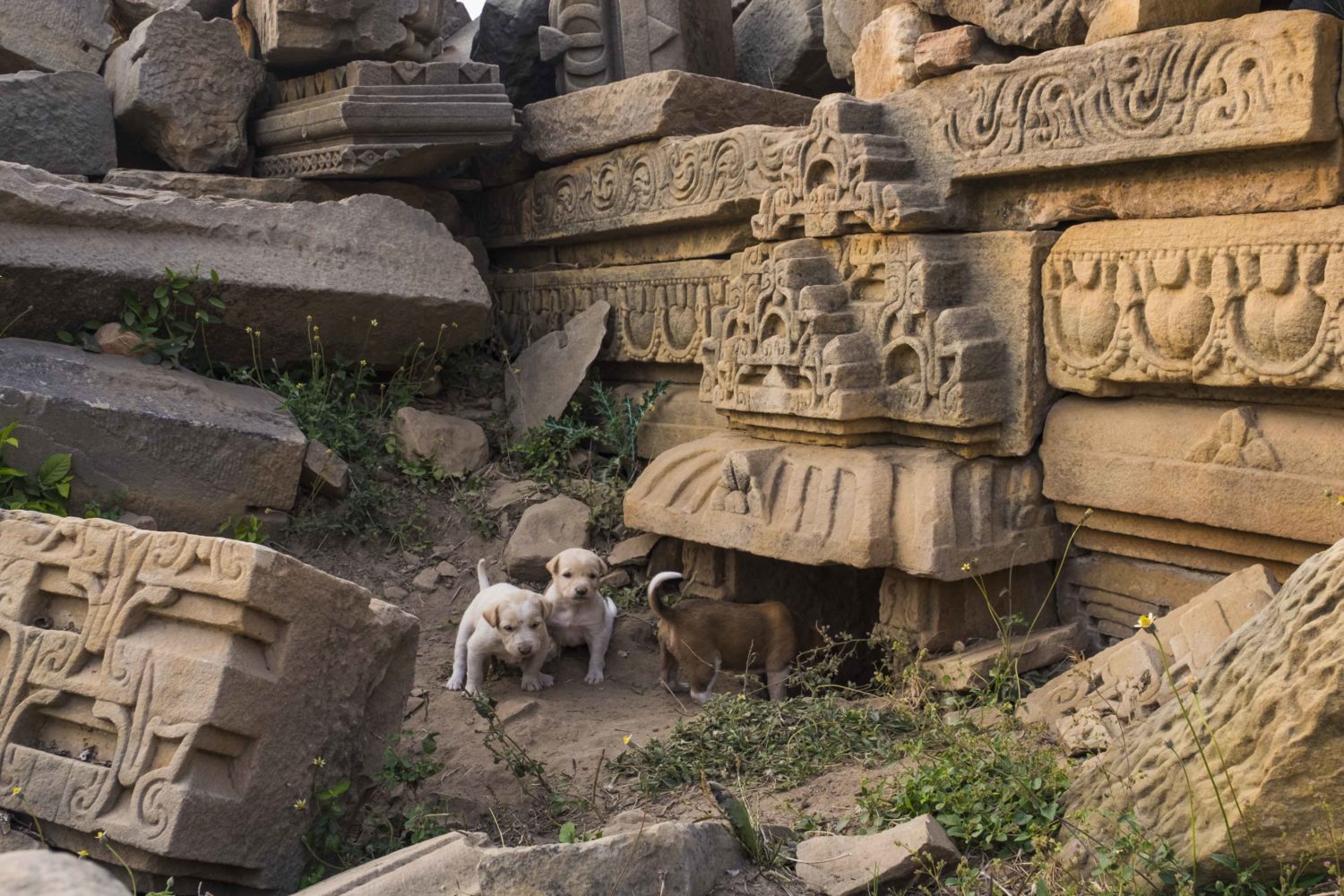“This looks exactly like the Parliament building in Delhi”
“How do you know, have you seen it.”
“That’s what they say, and plus it round, so it has to be.”
This conversation, in extremely proper Hindi, was between a couple that had come to see the Mitawali Temple, perched on a low hill in the district of Morena, which neighbours Gwalior. They were the only visitors besides us, a good day according to the guard. Said to be the inspiration for the Parliament building in Delhi, I wondered the same thing; if Lutyens had never travelled this far, how was he inspired by this perfectly round temple with 64 chambers on the inside. As Hoshner pointed out, he might have seen a painting or Lithograph of it, or maybe the story is just made up. Either way it does make for a fun story. The Chausath Yogini’ Temple in itself was intriguing in its simplicity and design; the 64 chambers would have once housed statues of the 64 Goddesses that members of the little known Yogini subsect worship. Yogini temples are fairly few and far between in India, and are said to have associations with tantric beliefs, thus adding to their allure. There are a couple of others in MP, one in Bhedaghat near Jabalpur and another in Khajuraho and two more in Orissa. Unfortunately here in Mitawali only the 64 chambers remain, the Yogini statues are long gone, robbing the site of some of its mystique. Some might have found their way to the many ASI museums around, though this is unclear. Even without the statues though the temple is still beautiful and unique with its perfectly circular form and commanding view of the miles of fields below.
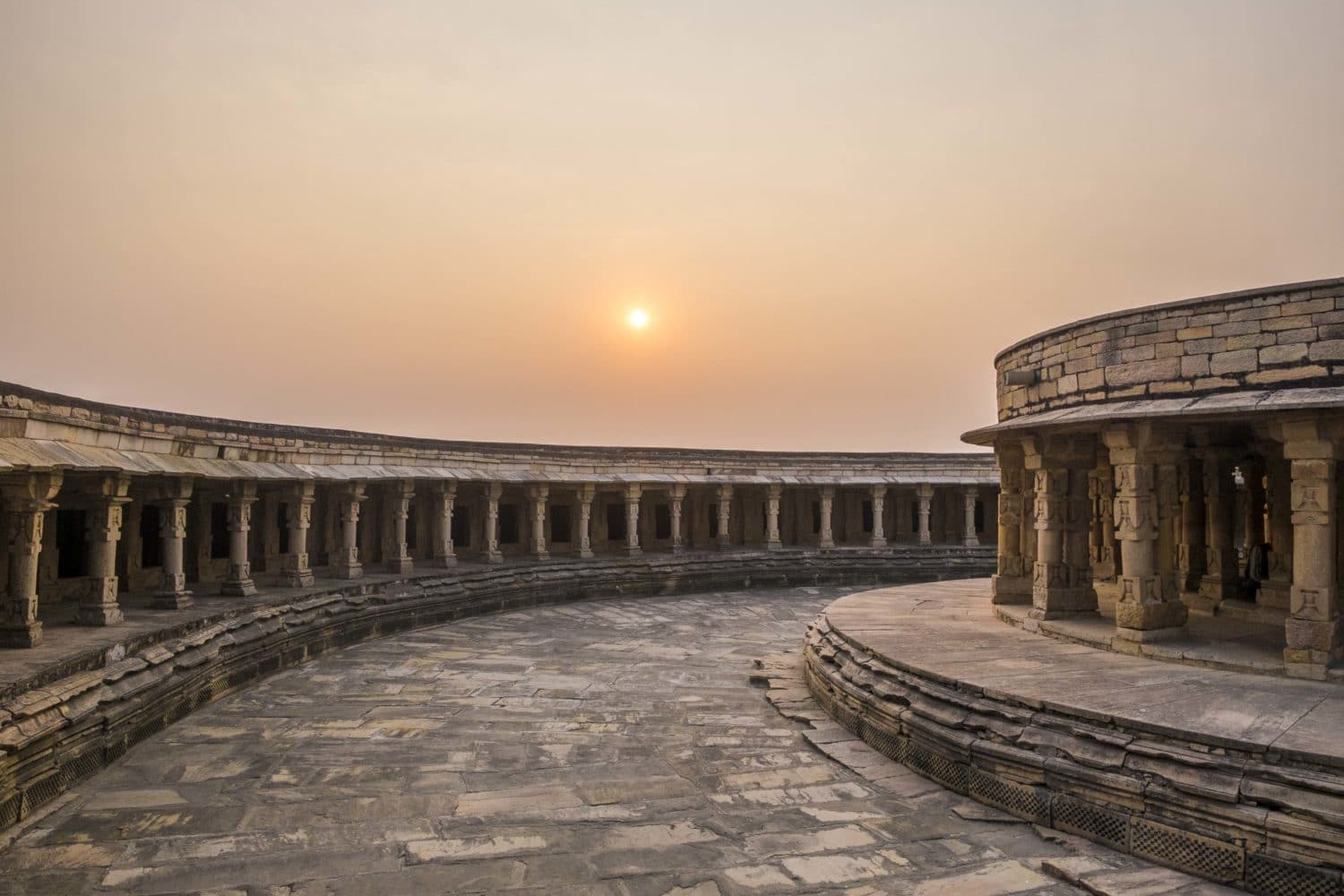
We were in Morena district, a couple of hours outside Gwalior, exploring old temples and ruins, decidedly one of our favourite activities. Famous for the dacoits that once held sway over the region, Morena in the lower Chambal Valley is home to some amazing old temples. Besides Mitawali, there is also the temple of Padavali, very different in style. The temple entrance has a flight of steps guarded by two massive lion like figurines, which we saw throughout the Bundelkhand region. There are also significant bastions built around the temple, giving the outside the appearance of a fort rather than a temple. The style of architecture inside the temple and that of the external walls differ noticeably, and we surmised that the fort walls and features were probably added later. The external bastions with the massive lions standing guard are impressive, as is the entrance pavilion of the temple itself. The inner walls, pillars, columns and friezes are replete with sculptures with the kind of detailing you do not expect to see in small forgotten temples, making the experiencing all the more exciting.
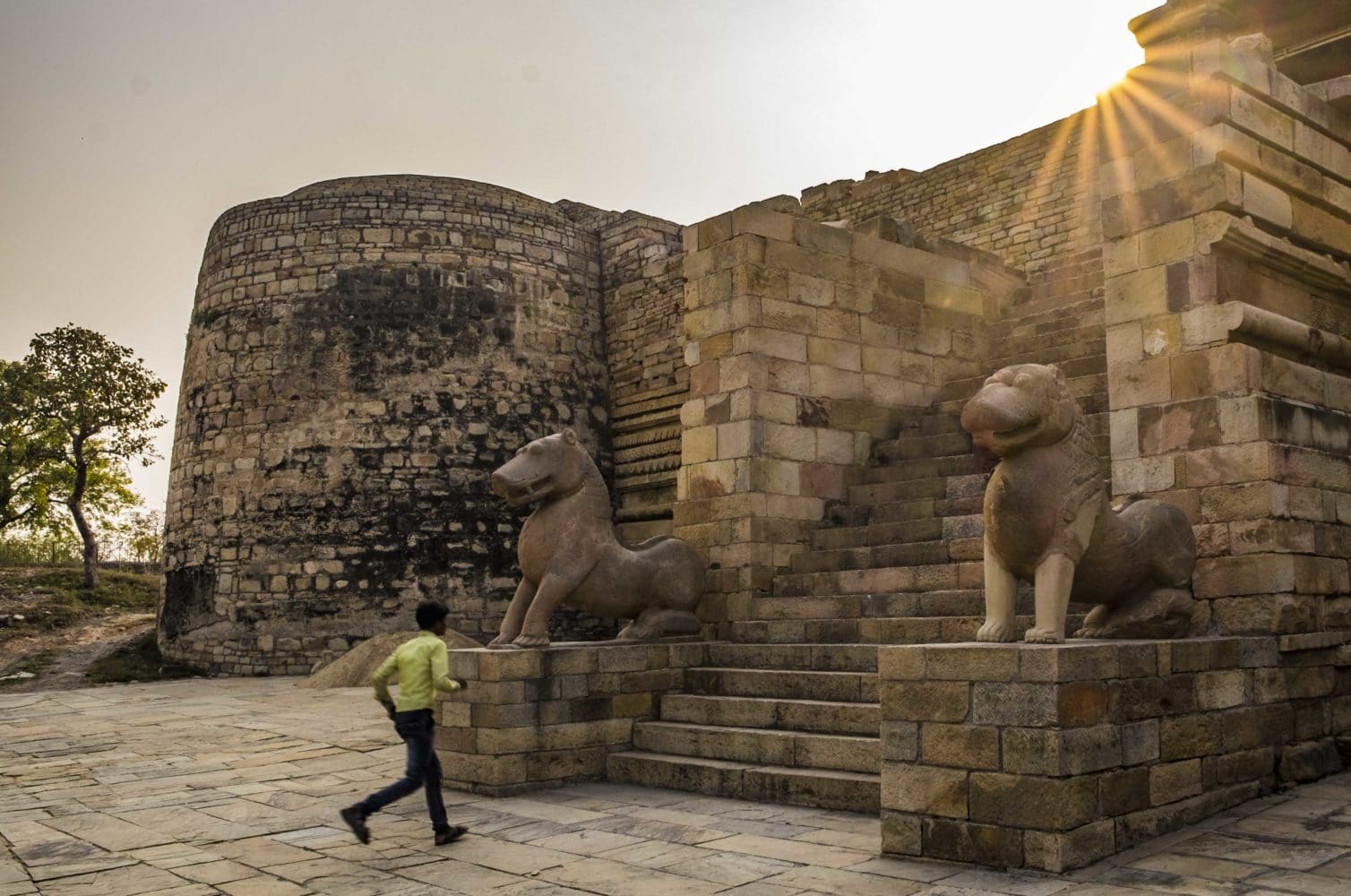
The carvings, depicting the pantheon of Hindu gods and goddesses including more obscure ones like the goddess Chamundi, depicted in her skeletal form, with a realism that most temple sculptures fail to capture. We spent more than a few minutes simply standing at the entrance, necks craned upwards and marvelling at these sculptures, pointing out stories we recognised from the great epics and discussing if a particular carving was this god or another!

After these two temples it seemed a bit impossible that the last group of temples, the more famous ones at Bateswar would impress, but as we were soon to learn, MP was constantly full of surprises. The Bateswar group of Temples, about a half hour from Mitawali, has a collection of over 200 small temples, standing literally cheek to jowl, of which a little over half have been fully restored. If the rows upon rows of temples clustered together in themselves are fascinating to behold, the story of their restoration is no less inspiring. The Morena region besides the being famous for its temples, was also known for the dacoits of the Chambal valley! The story goes something like this: KK Mohammed, former ASI head of the Bhopal circle, figured that the only way to reach these ancient monuments, deep in the forest region controlled by the dacoits, would be to work with them. Slowly but surely, he convinced the outlaws of the importance and relevance of the temple group, in ways known only to him. He was so successful that not only were they convinced of the merits of the idea and allowed restoration work to begin unhindered, they even provided security, thus ensuring that valuable artefacts and ruins were not vandalised or stolen. A heart-warming story if there ever was one.
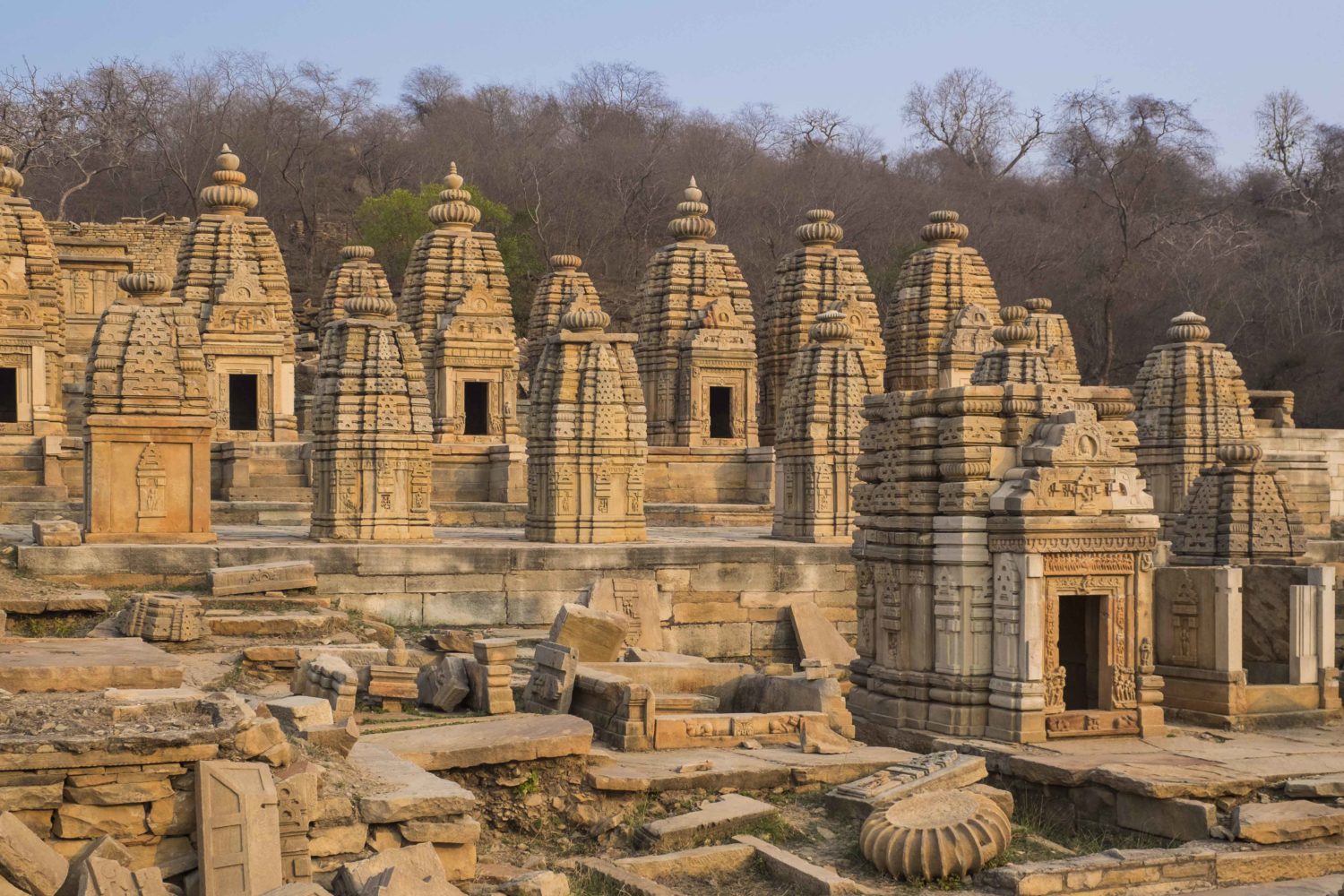
Whilst walking around the temples, we met the caretaker, who also doubled up as the priest, and chatted with him. He’d been working there since the restoration work started and showed us a book of before and after pictures, of the site. The work done already was impressive, as it mostly is in many of these ruins. One must commend the ASI for the excellent restoration work undertaken in many parts of the country. The temples only had a few visitors, the same couple we’d seen in Padawli and a few other families. It’s a bit of a shame that these amazing structures are so under visited. The emptiness of it suited us just fine though; we wandered around the many temples taking in the carvings and perfect symmetry in them. Walking through the ruins that were not yet restored was like being on the set of an Indiana Jones movie; columns, pillars, statues lying all around, some of which you had to clamber over or duck under to get ahead, all waiting to be put back together. Beyond the temples, the forest began and it was a perfect setting to sit down with some tea, as we absorbed some of the wonderful things we had seen and watched the sun slowly disappear over the horizon.
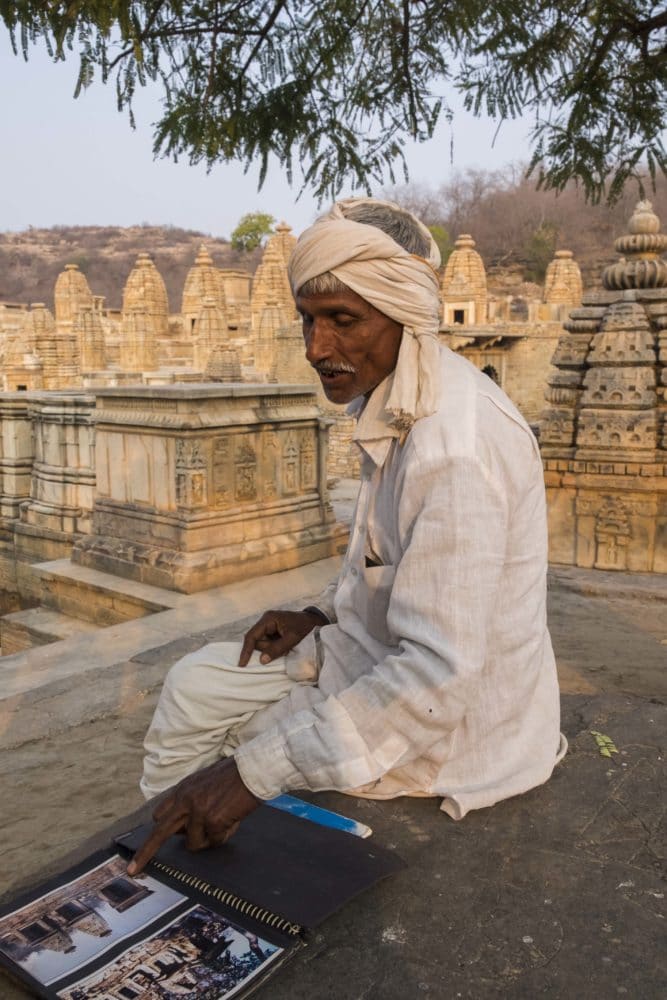
We headed back to Gwalior where we’d already spent a few days exploring the city of the Scindia’s. While it is possible to explore Gwalior in a day, and apparently many do, we feel that the large fort complex, museums and assorted other sites deserve a little more attention than a quick in-and-out.
Some Useful Information:
The temples of Bateswar, Padawali and Mitawali are located within 50 kms of Gwalior and can easily be done as a day trip. The temple groups are not easily accessible by public transport and thus it is advisable that you hire a car which should cost approximately Rs. 1500 for the day.
